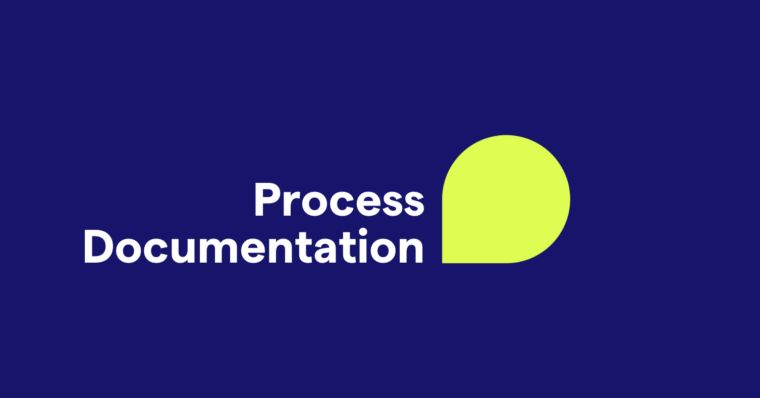
One of the most important aspects of a manager’s role is providing feedback that informs, educates, and empowers team members to grow and succeed. Nowhere is this more important than in the performance review. The performance review is the most structured opportunity for managers to evaluate employee performance, provide verbal and written feedback, and set goals for future development.
Done well, it also fosters open communication between managers and employees and leaves the employee feeling valued and clear on how to further succeed in their role. Read on to learn how to write and conduct constructive, impactful performance reviews.
What is a performance review?
A performance review is a formal, structured evaluation of work performance, including achievements and areas for improvement, and provides feedback for professional development.
A performance review can be a comprehensive annual performance evaluation conducted by a manager, a more holistic 360-degree review that incorporates workplace feedback from supervisors, peers, and subordinates, or a peer-to-peer review that includes valuable feedback on teamwork and collaboration skills from colleagues working closely with the employee. Performance reviews can also extend to educational settings, where peer reviews can be impactful.
In all cases, a performance review is a critical tool designed to foster growth and success through continuous improvement and the alignment of individual and business goals.
A performance review can also serve as an important tool for formally documenting unsatisfactory behavior or performance, with the aim of either setting a course for improvement or potentially leading to termination.
The 3 key components of an effective performance review
An effective performance review is built on three essential elements that ensure a comprehensive, fair, and productive evaluation:
1 Clear objectives
Your employee should have been given clear SMART objectives—Specific, Measurable, Achievable, Relevant, and Time-bound goals and responsibilities—through internal communications long before the performance review. These clear objectives are your employee’s roadmap to success in their role. They’re also your playbook for evaluating performance; the focus of your review should be how they performed in relation to the objectives given to them.
Examples of clear performance objectives
- Improve your department’s customer satisfaction score from 81% to 85% and increase the department’s customer satisfaction score from 85% to 90% by implementing two new customer service initiatives within the next six months.
- Develop and launch a new product feature that addresses our users’ top request, as identified in the team’s latest survey by the end of Q3.
- Decrease project overrun rates from 15% to 5% by improving resource allocation over the next year; introduce weekly progress check-ins over the next quarter to help ensure it happens.
2 Balanced feedback
Balanced feedback encompasses achievements and areas for improvement. Both are important in a performance review.
Every employee enjoys recognition for a job well done. The performance review is the time to celebrate those accomplishments in detail. This recognition fosters a sense of personal pride, boosts morale, and inspires an ongoing desire for professional growth within the company. Praise for accomplishments also makes it easier to receive constructive criticism, which is essential for helping your employee grow and advance in their role.
Whether the feedback is positive or negative, it should be supported by concrete examples and data, such as notes, emails, or quantifiable outcomes. This evidence-based approach provides clarity, educates employees about their impact, and demonstrates your knowledge and investment in their efforts and success.
3 Be specific, relevant, and actionable
Imagine if the only feedback you gave during a performance review was, “You need to improve your work.” Without identifying the aspects that need improvement, context or connection to the employee’s role or responsibilities, or guidance on how to improve or what steps to take next, your feedback is not valuable for the employee’s improvement, growth, or development or for helping you and your team get the best out of your team member.
This is why feedback should always be specific, relevant, and actionable:
Specific feedback lets the employee understand exactly what you’re talking about.
Relevant feedback ensures you’re providing feedback within the employee’s influence and relevant to the discussion at hand.
Actionable feedback gives the employee a clear understanding of the next steps, whether it’s improving their performance or keeping up the excellent work.
A more specific, relevant, and actionable statement surrounding a need for improved performance could be, “I noticed your reports often contain inaccuracies in the data analysis. For instance, the last report had a 10% error rate. To improve, I recommend double-checking your calculations and using our data verification tools before submission. Let’s also schedule a time to review these tools together.”
Examples of effective feedback
- “Your presentation skills have significantly improved. The quarterly report you delivered last month was clear, concise, and well-received by the executive team.”
- “While your technical skills are strong, there’s room for improvement in project management. I recommend focusing on timeline estimation and resource allocation in the upcoming quarter.”
- “Over the past three months, I’ve observed that you consistently meet project deadlines, but often at the expense of team morale. For instance, in the recent marketing campaign, team members reported working overtime for two weeks straight. Moving forward, I’d like you to focus on improving your delegation skills. Let’s set up a meeting to discuss strategies for distributing tasks more evenly and to explore time management techniques that can help maintain both efficiency and team well-being.”
7 steps for writing and conducting performance reviews
Writing and conducting meaningful performance reviews takes time and effort. But the rewards far outweigh the cost. Along with recognizing your employees for their work and providing useful feedback on their performance, your review will promote ongoing open communication, help to clearly define expectations, and lay the groundwork for future success for your team members.
To streamline your efforts and achieve optimal results, follow these seven performance review best practices:
1 Ask employees to conduct a self-evaluation
Employee self-evaluations, where the employee provides a written review of their work, are one of several powerful employee evaluation methods that benefit the employee and the manager.
For the employee, this self-reflection is an opportunity to highlight achievements that may have gone unnoticed, recognize areas for improvement, and gain greater self-awareness.
For the manager, it’s an opportunity to see the performance through the eyes of the employee and get information that will help inform a more accurate, holistic performance assessment.
2 Gather comprehensive data to support your evaluation
Using data to help formulate your review is one of the most powerful performance assessment strategies.
Data provides unequivocal evidence of how the employee performed against their SMART objectives or documented roles and responsibilities. Armed with data, you’ll gain clearer insights into your employee’s performance, enabling you to craft an objective, informed, and constructive evaluation. Data can also provide concrete examples to include in your written review and discussion points for when you conduct the performance review.
When seeking performance-review data, collect from various sources: Peer feedback, client or customer reviews, project outcomes, attendance records, sales figures, and previous performance metrics provide more of a 360-degree view and less opportunity for unintentional bias.
3 Write the performance review
Once you combine the SMART objectives, self-evaluation notes, and data, you should have a clear view of the employee’s performance. Use this information to write a performance review.
Start with positives before moving to areas for improvement. Genuine praise helps soften any negative feedback. Aim for a 3:1 ratio of three positive comments for every piece of constructive feedback, and choose your words carefully. This balance ensures that employees feel appreciated and recognize areas for improvement.
For best results, be sure to frame areas for improvement as opportunities for growth rather than failures. Use the “situation-behavior-impact” model to keep feedback objective. You should describe:
- The situation
- The observed behavior
- Its impact on the team or organization
This “show, don’t tell” communication style makes your feedback more relatable and understandable. Finally, include relevant data, stats, and examples in the written document, and make notes of any additional data or examples you may want to explore during the performance review meeting.
Looking for more guidance? See performance review examples and how to strengthen your writing.
4 Conduct the performance review meeting
Performance review meetings can evoke a mix of anticipation and anxiety for employees, particularly when bonuses are tied to individual goals or there are known performance concerns that will be addressed. For these reasons, it’s important to create a calm, professional, and constructive atmosphere at the beginning of the meeting.
Start by choosing a quiet, comfortable location for the meeting where there are no distractions or potential for other employees to hear your conversation.
Begin the meeting with a brief, casual conversation to help the employee relax: a warm greeting and a little banter can go a long way in calming nerves. Then clearly explain the purpose and structure of the review.
As you go through the review and deliver balanced feedback, begin with the positives. Highlight specific accomplishments and contributions. Go into detail and share the data you have to underscore your awareness of their efforts.
If you must address sensitive issues, such as poor job performance, behavioral problems, or workplace conflicts, be mindful of how you approach them. Generally speaking, a direct approach paired with empathy works best. Be specific when addressing concerns, focusing on behaviors and outcomes rather than personal characteristics. Provide clear, actionable suggestions for improvement to guide the employee effectively.
Use one of the most important employee feedback techniques: Encourage conversation by asking open-ended questions that invite the employee’s perspective. An example could be, “What are your thoughts on what I’ve shared?” This shows you value their input, and it creates a more engaging, collaborative experience for the employee. Throughout the meeting, listen actively, take notes, if appropriate, and show genuine interest in their input.
5 Use effective communication techniques
There shouldn’t be any gray areas in performance review communications. Effective communication is the difference between a review with clear feedback, understanding of next steps, and a positive outcome and a deflated, confused, or possibly disgruntled employee who is unclear on how to proceed successfully. Here are five ways to ensure clear and effective communication:
- Employ active listening techniques: Maintain eye contact and provide verbal and nonverbal cues to demonstrate engagement.
- Use clear, concise language and avoid jargon or ambiguity when discussing performance metrics or expectations.
- Practice empathy: Acknowledge the employee’s perspective and emotions throughout the conversation.
- Summarize key points and ask for confirmation, to make sure you and your employee are aligned.
- Use role-playing exercises to practice addressing sensitive topics. You can recruit a colleague to play the employee role and offer various responses to your constructive feedback on a hypothetical performance issue.
6 Schedule a post-review follow-up
After the performance review, arrange a follow-up meeting to solidify the discussion and set a clear path forward. This is your opportunity to collaboratively establish new, actionable plans that align with the employee’s role, development needs, and company objectives.
Begin the post-review follow-up by summarizing the key points from the review, including strengths to leverage and areas for improvement. Then work with the employee to establish new SMART goals that address the identified areas for growth.
For example, if communication skills were highlighted as an area for development, a goal might be: “Complete an advanced presentation skills course and deliver three team presentations within the next six months.”
Create a detailed action plan for each goal, outlining specific steps, resources needed, and milestones. Ensure that the plan includes regular check-ins or employee development reviews to monitor progress and provide ongoing support.
This collaborative approach not only reinforces the employee’s commitment to their development but also demonstrates your, and the organization’s, investment in their success.
By establishing clear, measurable objectives and a structured plan for achievement, you set the stage for continuous improvement and enhanced performance in the coming review period.
7 Ongoing support and check-ins
It’s not enough to offer a review, establish the next steps, and then go about your business. As your employee’s manager, a little ongoing effort from you goes a long way toward reinforcing goals and success, providing opportunities for feedback and questions, and ensuring that your employee is supported in their development journey.
One effective strategy is to schedule brief, informal catch-ups. Setting up a quick, recurring coffee chat or dedicated time during one-on-one meetings to discuss progress and challenges creates a constructive, supportive environment for success. Additionally, celebrating small wins along the way can boost morale and keep motivation up as you and your employee head toward the next performance review.
Key points
- Establish clear SMART objectives for employee performance.
- Provide balanced feedback that recognizes achievements and identifies areas for improvement.
- Ensure feedback is specific, relevant, and actionable.
- Encourage a culture of continuous feedback and growth through regular check-ins that reinforce goals, provide support and feedback, discuss progress and challenges, and celebrate small wins along the way.
Performance reviews FAQs
How often should performance reviews be conducted?
Performance reviews should ideally be conducted at least annually, but more frequent check-ins—such as quarterly or biannually—can enhance communication and development. This approach fosters a culture of continuous improvement and allows for timely adjustments to goals and performance expectations.
How can performance issues be addressed without demotivating employees?
To address performance issues without demotivating employees, use facts, not opinions, and a direct approach paired with empathy. Focus on specific behaviors and outcomes rather than personal characteristics. Provide clear, actionable suggestions for improvement, frame areas for development as opportunities for growth, and use the “situation-behavior-impact” model to keep the feedback objective and relatable.
What are the best practices for documenting performance reviews?
Best practices for documenting performance reviews include gathering comprehensive data from various sources so you can make your assessment based on fact rather than opinion. Frame your feedback for success: Start with accomplishments, then aim for a 3:1 ratio of positive comments to constructive feedback, using the “situation-behavior-impact” model for objectivity. Include relevant data, stats, and examples to support the assessment.






